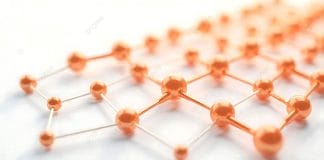Imagine holding a crystal and knowing its entire life story. That’s the magic of crystal chemistry and mineral composition analysis.
These fields reveal the details of the atoms and molecules in minerals, including the chemical formula and structure of crystals, offering crucial insights for geologists, material scientists, and environmental researchers. But what exactly are these disciplines, and why are they so important?
In this blog post, we’ll explore the basics of crystal chemistry and the techniques used to analyze the chemical composition of a mineral and how different minerals form different crystal structures. Whether you’re a chemistry enthusiast, a science student, or a professional geologist, you’ll find valuable information to deepen your understanding of these fascinating topics.
Crystal Chemistry Basics
In the world of crystals, atoms are arranged in highly ordered structures known as crystal lattices. These lattices are three-dimensional grids where atoms or ions occupy specific positions, creating a repeating pattern that extends in all directions.

The arrangement of atoms within these lattices determines the physical properties of the crystal, such as hardness, melting point, and electrical conductivity.
This atomic structure is crucial as it dictates how chemical elements form crystals and influences the process of crystal growth.
Types of Crystal Structures
Crystals can be categorized based on the types of bonds holding their atoms together. Here are the main types:
Ionic Crystals
These crystals are formed by the electrostatic attraction between positively charged ions (cations) and negatively charged ions (anions). This type of bonding typically occurs between metals and non-metals.
The resulting crystal structures are usually hard and brittle, with high melting points. Common examples include table salt (NaCl), which is essential for human nutrition, and many minerals like fluorite (CaF2). The formation of crystals in ionic structures often results in distinct crystal faces and crystal shapes.
Covalent Crystals
Atoms in these crystals are held together by covalent bonds, where electrons are shared between atoms. This type of bonding leads to very strong and stable structures.
Covalent crystals tend to be hard and have high melting points as well. Diamonds, made entirely of carbon atoms arranged in a tetrahedral lattice, are the hardest known natural material. Quartz (SiO2) is another classic example, widely used in making glass and electronic components. Minerals with the same chemical composition can exhibit different crystal shapes depending on the conditions of their formation.
Metallic Crystals
These are composed of metal atoms that share a “sea” of free-moving electrons, which gives rise to unique properties such as electrical conductivity, malleability, and ductility. This type of bonding allows metals to conduct electricity and heat efficiently and to be shaped without breaking.
Examples include copper, which is widely used in electrical wiring due to its excellent conductivity, and gold, valued for its rarity and used in electronics and jewelry. Different minerals like iron can form various crystal faces depending on the form of oxide weight percents. For example, a mineral is called siderite when iron forms an iron carbonate.
In addition to these main types, there are also molecular crystals and network covalent crystals, which exhibit unique properties and serve various practical applications in science and industry. Understanding the bonding and structure of these crystals helps in the development of new materials with desired properties for technological advancements.
The Role of Ionic Radii
The stability and structure of ionic crystals depend heavily on the sizes of the ions involved, known as ionic radii. When ions of similar sizes come together to form stable structures, they exhibit the characteristic graphite structure.
However, if there’s a significant size difference, the crystal lattice may become distorted, affecting the mineral’s physical and chemical properties.
Understanding ionic radii is crucial for predicting how different minerals will form and behave under various conditions, especially for minerals since their formation processes are highly dependent on these factors.
Mineral Composition Analysis Techniques
Accurate analysis of mineral composition is essential for understanding the characteristics and potential uses of different minerals. These techniques involve various methods to determine the chemical and structural properties of minerals, providing insights into their formation, stability, and industrial applications.

X-ray Diffraction (XRD)
X-ray Diffraction (XRD) is a powerful analytical technique used to identify the crystalline structure of materials. By directing X-rays at a mineral sample and measuring the angles and intensities of the diffracted beams, XRD provides precise information about the arrangement of atoms within the crystal lattice. The whole crystal structure of a mineral can be computed using this technique.
Principle of XRD Analysis
X-ray Diffraction (XRD) is one of the most powerful techniques for determining the crystal structure and composition of minerals. When X-rays are directed at a crystal, they interact with the crystal lattice and produce a diffraction pattern. This pattern is unique to each mineral and can be used to identify the arrangement of atoms and chemical bonds within the crystal. In the case of these beautiful minerals, the diffraction patterns provide valuable insights.
Revealing Crystal Structure and Composition
By analyzing the diffraction pattern, scientists can determine the spacing between the planes of atoms in the crystal lattice. This information allows them to identify the mineral and understand its chemical composition. XRD is widely used in geology, material science, and chemistry to study everything from ancient rocks to modern synthetic materials, with beautiful mineral examples highlighting the technique’s efficacy.
Other Techniques
In addition to X-ray Diffraction, several other analytical techniques are employed to investigate the composition and properties of minerals. These methods provide complementary information, enabling a comprehensive understanding of mineral structures and their potential applications.
Electron Probe Microanalysis (EPMA)
EPMA involves bombarding a mineral sample with a focused beam of electrons. This interaction causes the sample to emit characteristic X-rays, which can be analyzed to determine the elemental composition of the mineral.
EPMA is particularly useful for analyzing small areas of a sample with high precision. These minerals form an ideal chemical composition computed from its chemical formula and the weights of its constituent elements.
Neutron Activation Analysis (NAA)
In NAA, a mineral sample is exposed to neutrons, causing some of its atoms to become radioactive. By measuring the radiation emitted, scientists can identify and quantify the elements present in the sample.
This technique is highly sensitive and can detect trace elements in very small concentrations. The ideal chemical composition of these minerals can be computed from its chemical formula and the weights of its constituent elements.
Applications of Mineral Composition Analysis
Understanding a sample’s mineral composition data in the form of percent data has wide-ranging implications. By identifying specific elements and their concentrations, scientists and engineers can gain valuable insights for industries like geology, material science, environmental science, and archaeology.
This analysis drives innovation, informs resource management, and helps understand Earth’s history and processes.

Geological Studies
Mineral composition analysis plays a vital role in geological studies. By identifying the minerals present in a rock, geologists can determine its origin and history.
For example, the mineral composition of sedimentary rocks can reveal information about the environment in which they were formed, while the minerals in igneous rocks can provide clues about the conditions deep within the Earth’s internal structure. Well-formed crystals and crystal structures may also provide significant insights into these processes.
Material Science
In material science, understanding the mineral composition of materials is essential for developing new products with specific properties. For instance, by analyzing the chemical composition of ceramics, scientists can create materials that are more durable, heat-resistant, or electrically conductive. This knowledge is also crucial for improving the performance of existing materials and developing advanced technologies.
Environmental Science
Mineral composition analysis is also important in environmental science. By identifying the minerals present in soil and water samples, researchers can detect pollutants and assess their impact on the environment.
For example, the presence of certain minerals in water can indicate contamination by heavy metals, while the composition of soil minerals can reveal past industrial activities. Minerals must be studied carefully, as many have heard about natural minerals and their implications on environmental health.
By analyzing the chemical composition data, researchers can better understand these processes and the internal structure of samples, driving advancements in their respective fields.
Are crystals formed by different minerals the same?
Crystals formed by different minerals are not the same, as each mineral has a unique chemical composition and crystalline structure that dictates its properties. For instance, a quartz crystal, primarily composed of silicon dioxide, forms hexagonal prisms that exhibit notable hardness and clarity.
In contrast, a calcite crystal, made of calcium carbonate, often forms rhombohedral shapes and displays a characteristic reaction to acidic solutions. These differences stem from the fundamental atomic arrangements and bonding within each mineral, which determine its physical attributes such as colour, hardness, and cleavage.
Consequently, while all crystals share the common feature of a well-ordered structure, the diversity in mineral composition leads to a wide variety of crystalline forms and properties.
Conclusion
Crystal chemistry and mineral composition analysis are essential tools for understanding the natural world and developing new technologies. From revealing the secrets of ancient rocks to creating cutting-edge materials, these fields offer valuable insights for a wide range of applications.
As we look to the future, advancements in analytical techniques will continue to expand our knowledge and capabilities. Whether you’re a chemistry enthusiast, a science student, or a professional geologist, exploring the world of crystal chemistry and mineral composition analysis is a rewarding and enlightening experience.
Ready to take your understanding to the next level? Sign up for our free course on advanced mineral analysis techniques and join a community of passionate learners and professionals.
























































